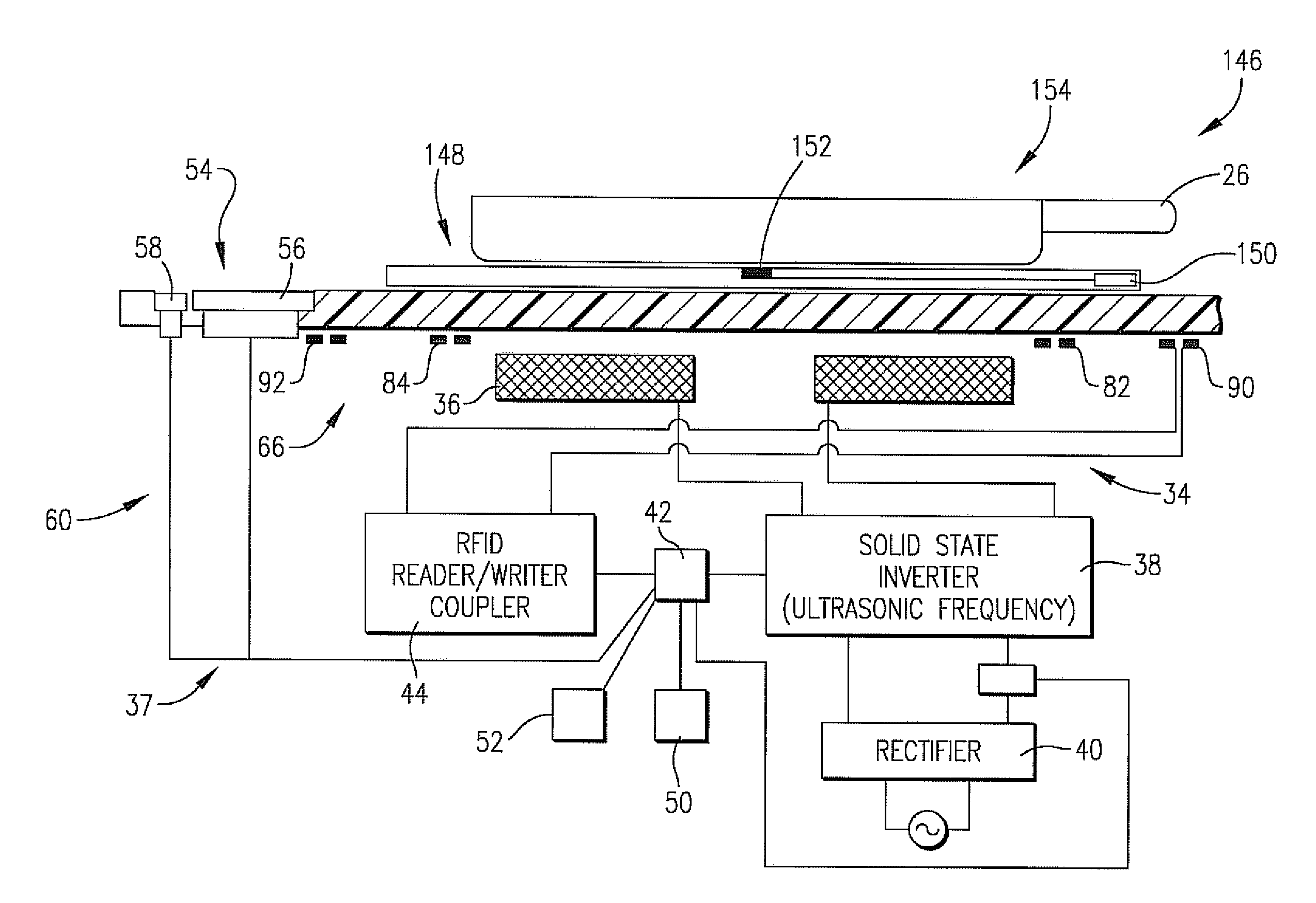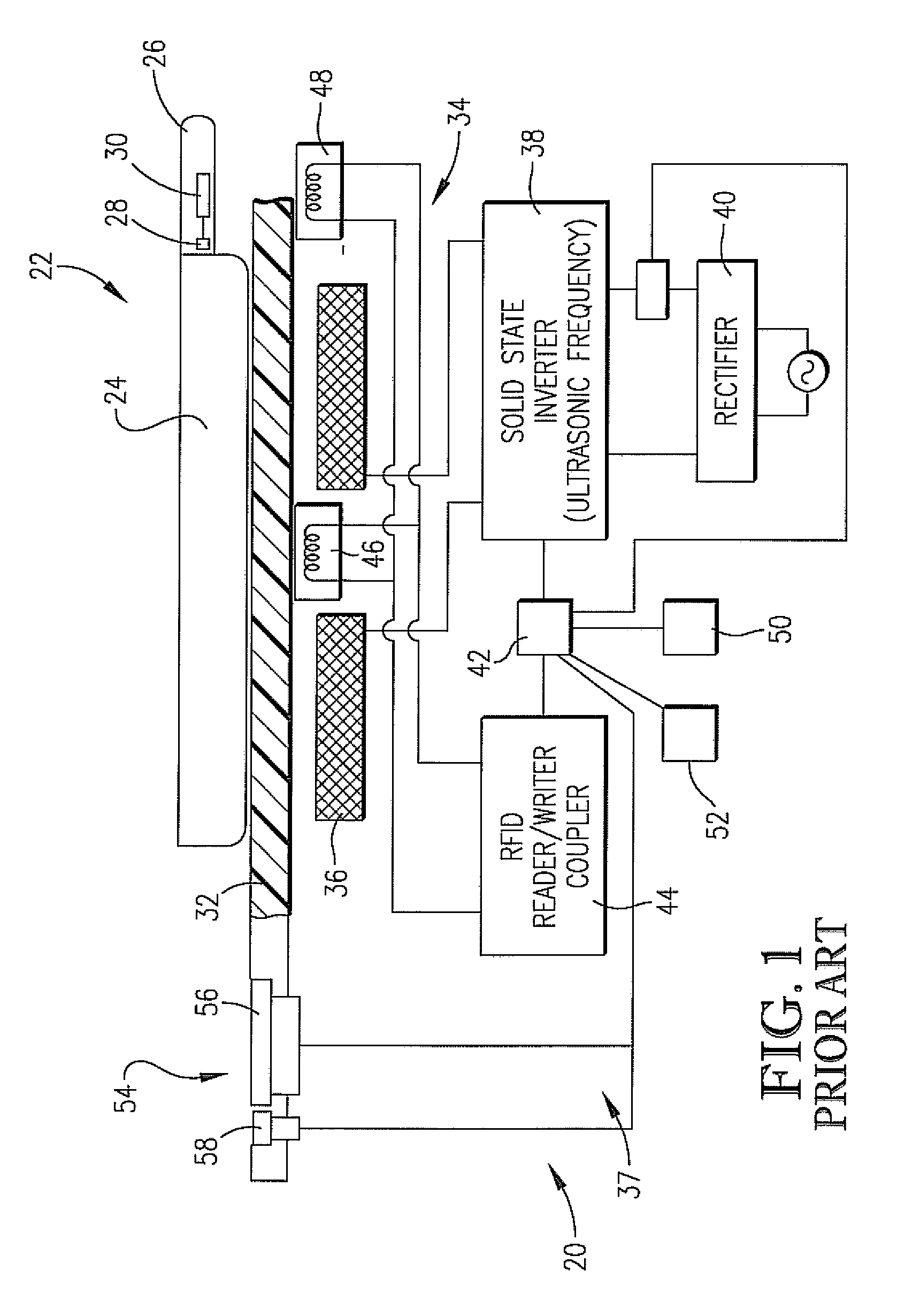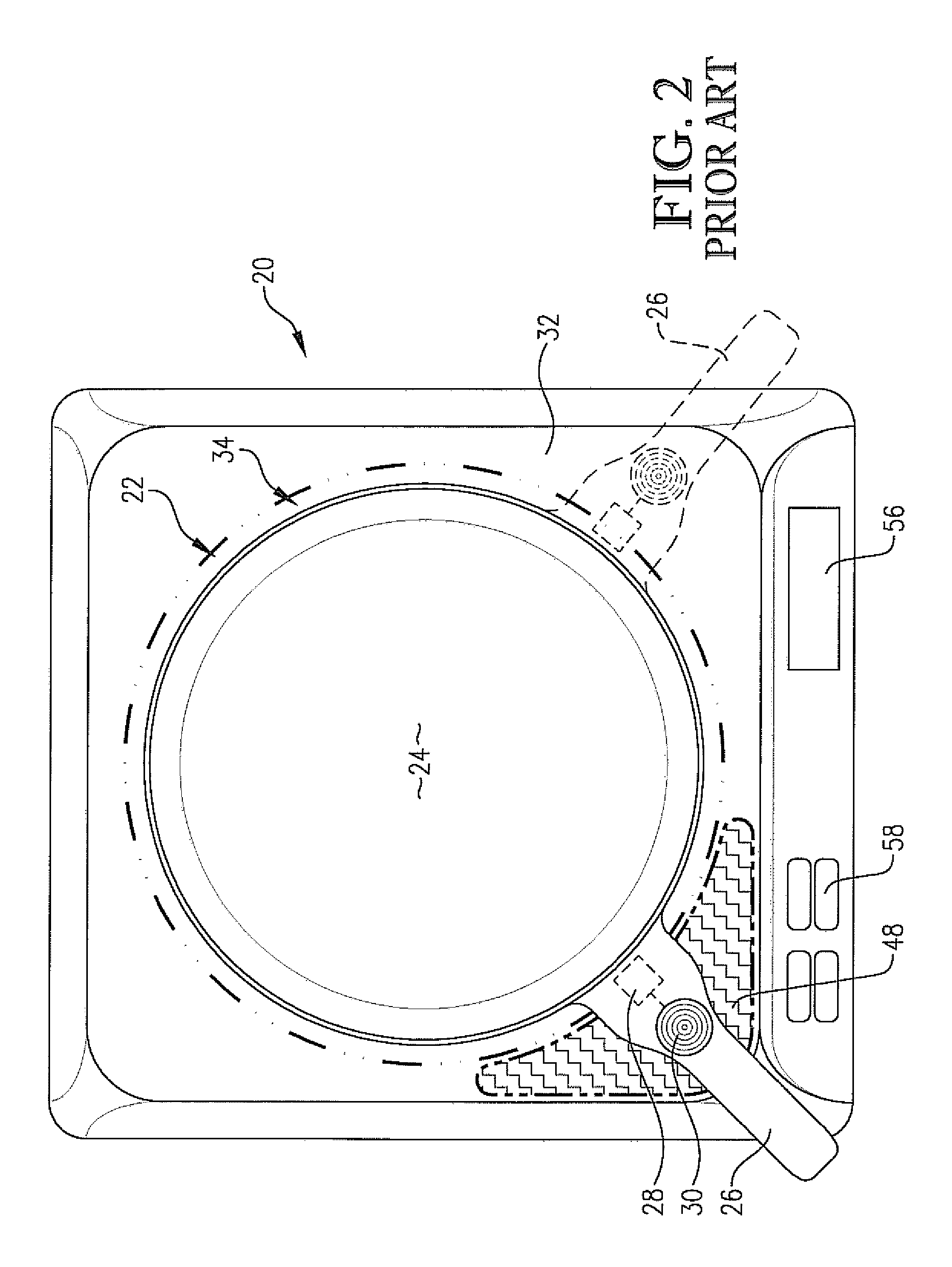Radio frequency antenna for heating devices
a radio frequency antenna and heating device technology, applied in the direction of electric/magnetic/electromagnetic heating, instruments, electric signalling details, etc., can solve the problems of loss of necessary rf communication between the tag and the reader, the inability to place the rfid reader antenna in a heatable portion of the object, and the inability to maintain rf communication with the handle-mounted rfid reader antenna, etc., to achieve the effect of small penetration
- Summary
- Abstract
- Description
- Claims
- Application Information
AI Technical Summary
Benefits of technology
Problems solved by technology
Method used
Image
Examples
Embodiment Construction
[0029]Referring first to FIGS. 1 and 2, a prior art induction heating apparatus 20 and associated heatable cooking vessel 22 are illustrated. This apparatus is of the type described in U.S. Pat. No. 6,953,919 incorporated by reference herein in its entirety.
[0030]In general, these Figures depict an exemplary RFID-equipped cooking vessel 22 in the form of a pan or skillet having a food-holding section 24 and elongated handle 26. The handle 26 includes a resistant temperature sensing device 28 in thermal connection with the section 24, and an electrically coupled RFID tag 30.
[0031]The heating apparatus 20 includes an upper support 32 adapted to support vessel 22 as shown. The apparatus 20 also includes one or more hobs 34 having a work coil 36 and associated ultrasonic frequency inverter 38 and rectifier 40. As illustrated, the vessel 22 is positioned directly above the hob 34 and work coil 36. The overall control circuitry 37 associated with the apparatus 20 includes a microprocessor...
PUM
 Login to View More
Login to View More Abstract
Description
Claims
Application Information
 Login to View More
Login to View More - R&D
- Intellectual Property
- Life Sciences
- Materials
- Tech Scout
- Unparalleled Data Quality
- Higher Quality Content
- 60% Fewer Hallucinations
Browse by: Latest US Patents, China's latest patents, Technical Efficacy Thesaurus, Application Domain, Technology Topic, Popular Technical Reports.
© 2025 PatSnap. All rights reserved.Legal|Privacy policy|Modern Slavery Act Transparency Statement|Sitemap|About US| Contact US: help@patsnap.com



